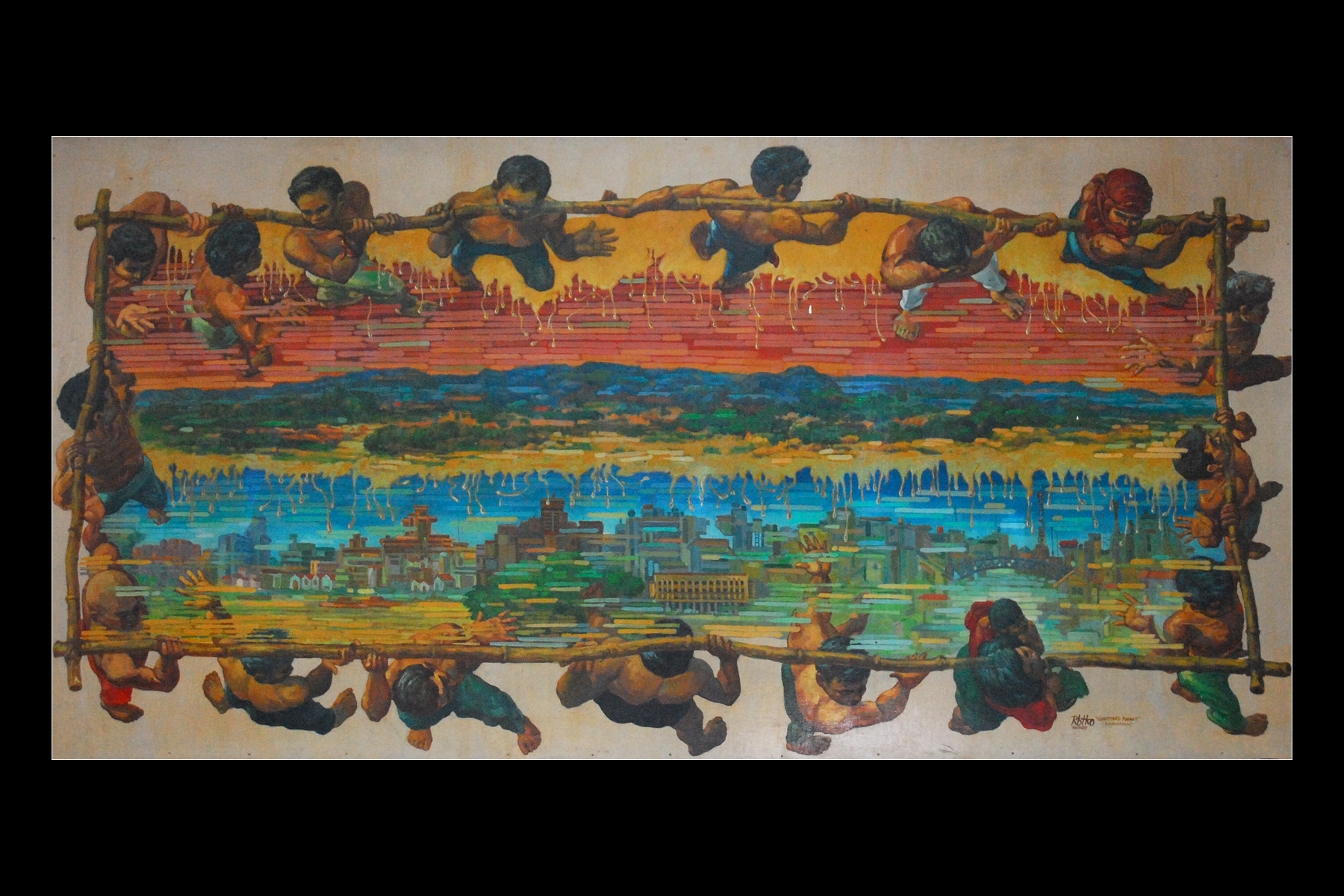
About the Piece
An iconic image in Philippine art is drawn from the traditional Filipino custom of bayanihan. It is derived from the word bayan, meaning nation, but has, through the decades, assumed the broader meaning of community spirit, or the action of people working together for a particular or common goal. Its original action was the rural custom of townspeople, especially done by the males, of lending a hand in carrying a neighbor’s nipa hut to another location.
The most famous painting of the subject was done by the muralist and National Artist Carlos “Botong” Francisco. Another National Artist, Fernando Amorsolo, also made his own version of the Bayanihan, which is in the collection of the UST Museum.
Robert Ko interprets the subject by using an entirely unexpected treatment that departs from convention, and succeeds at imparting a new insight. His construction is not of a frail hut made of light, indigenous materials, but of the symbolic city of Manila being carried on the solid shoulders of strong, capable Filipinos working as one, imbued with courage, persistence, and pride, determined to reach the goal of leading the country to a better destination, where a brighter future lies in wait, with FEU at the center.
Robert Ko is a graduate of FEATI University. He also taught in FEU’s Institute of Architecture and Fine Arts.
-
Artist/s
Robert Ko
-
Date
1989
-
Medium
oil on canvas
-
Dimensions
48" x 96"
-
Location
2/F East Side Lobby, Administration Bldg.